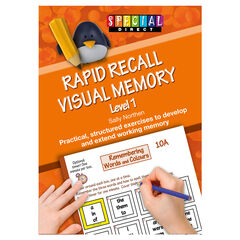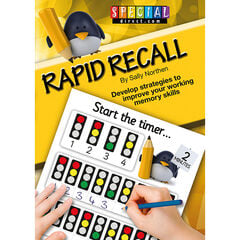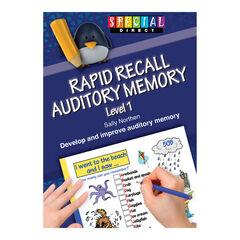In this week, as we focus on dyslexia awareness, there will be a plethora of advice about ‘busting’ the myths that surround dyslexia. In this article, we would like to focus on one specific area that often gets forgotten … excuse the pun. The impact of memory difficulties in dyslexia and particularly working memory challenges cannot be underestimated. This vital function of our brain, impacts upon all areas of life, let alone learning. Whilst current research in this area maintains that working memory difficulties cannot be cured, it can be supported.
So, how can we help?
Post-it Notes
Let’s take a step back a moment and think about what working memory actually is and what it enables us to do. Tracy Packiam Alloway, a guru in the field of working memory research, describes working memory as the “Brain’s Post-it Note”. It is our ability to remember and process information. Like using post-it notes, working memory allows us to make mental scribbles of multiple pieces of information or processes we need to remember and think about.

When reading therefore, you need to understand what you have read, and need to remember where you are in a sentence, the specific meanings of words, together with what you have already read. On top of this, you need to recall the general point of the preceding passages.
Writing is even harder because you need to take a more ‘active’ role in grouping information and putting it down in a coherent way; legibly, in order and spelt correctly.
Working memory difficulties therefore impact greatly upon every aspect of life, particularly for those people with dyslexia. When writing, they are likely to lose their place when copying and can be unable to recall systematically taught spellings or facts and formulae. The organisation of the correct books and equipment needed for school and everyday life, can be a challenge. Remembering messages and instructions, together with taking notes can be problematic, frustrating and embarrassing.
When all of the above can be a daily challenge, it is unsurprising that this can impact on behaviour and mood.
With a little help…
All is not lost however, as there are a number of strategies that can be developed as an effective toolkit to support a weaker working memory. Often, those with dyslexia, have good visuo-spatial memory, so information presented visually is more likely to be retained. Examples of supporting memory in this way include, ‘marking it up’, slowing things down (chunking) and daily memory tasks.
‘Marking it up’
Can you imagine reading a novel with no page numbers and then trying to find where you are up to? Marking up information you need to read, will help you to process this.
- Use pictures, lists and numbers for instructions.
- Highlight key information – this should be taught as an essential skill.
- In mathematical calculations, you can highlight the place values, place holders and the operation to be carried out.

Slowing it down
Instructions should be given slowly and in stages. This is often referred to as ‘chunking’. In addition, ensuring that the person is focussed on the mouth of the speaker will aid transferral and retention of the information to the longer term memory stores. Repeating ‘chunked’ instructions will also help.
Pictures are worth a thousand words
The creation of visual representations of verbally presented information can also help to support a multisensory approach to retention. In addition, colour coded visual timetables have proven invaluable for supporting organisational skills.
Daily memory activities
‘Use it or lose it’ is an age-old adage and as with many of these things is based on a good heap of truth. When you have a spare five minutes, there are a huge number of auditory and visual memory games to try. Many of these require no resources, such as a game of ‘I went to market and I bought…’ or ‘Kim’s game’. Others such as ‘Dobble’, the ‘Brainbox’ series of games and the ‘Rapid Recall’ series of books can also be purchased. There are also many freely available online games.
Explore our full range of Rapid Recall Books
And finally…
Remember, that a multisensory approach to learning anything (bombard the senses) is a tried and trusted method of learning and retaining information. This is also the case with memory activities.
This Dyslexia Awareness Week, why not ‘dust off’ those brain cells and try some of the strategies we have mentioned. If you live with or work with someone with dyslexia, be mindful of the memory challenges they face on a day-to-day basis.
With many thanks to Pamela Hanigan and Rachel Gelder from Lancashire Dyslexia Information Guidance and Support (LDIGS) for writing this blog.
LDIGS was set up by Pamela Hanigan and Rachel Gelder in response to the needs of pupils, parents, and professionals, for quality support for dyslexia. Both have long experience in the education sector, working with a wide range of abilities and age groups. Pamela is a qualified teacher, with a special interest in reading and phonics. Rachel is SENCo with a particular interest in memory and processing issues. Both are approved BDA practitioners, providing diagnostic assessments and classroom support to teachers and TA’s working with dyslexic students. They also advise headteachers and SENCo’s with strategic direction in relation to dyslexia, through consultancy and training.









